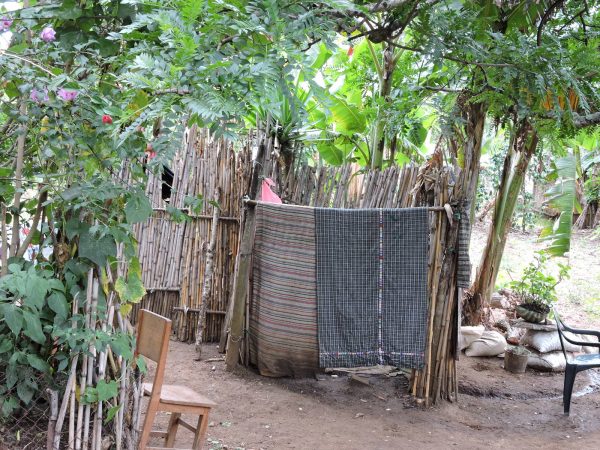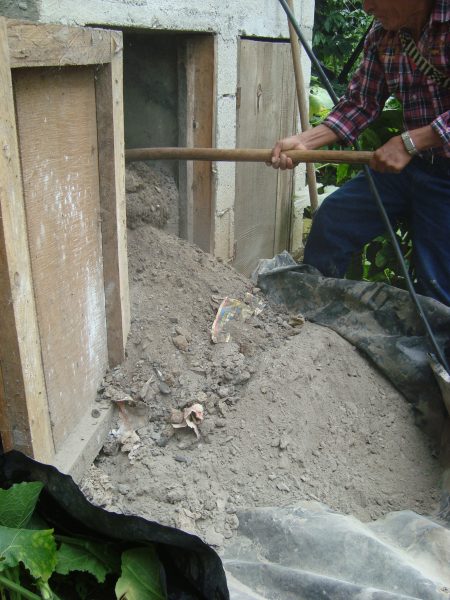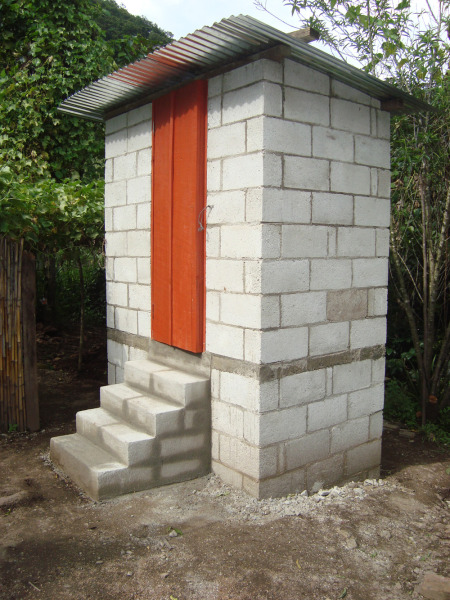A safe, sanitary place to GO!
Hundreds of families in rural Guatemala do not have bathrooms or running water. Many are forced to deficate in nearby corn fields. This creates several health and hygiene problems. Some families have pit latrines which is a deep hole in the ground with a seat over the hole surrounded by whatever material they can use to provide a little privacy. Many times these pit latrines fill with water during the rainy season and collapse.
A pit latrine needs to be installed 45 feet from any water source. Most families do not have enough land to comply with this requirement. Another problem with pit latrines is flies and bad odor.

Pictured above: A family’s bathroom
A composting latrine solves many problems. It not only protects a community’s water supply but also provides them with a rich, organic fertilizer to boost food harvests. An added benefit is it provide a safe, secure, and private place to ‘go’.
ADVANTAGES OF THE DRY COMPOSTING TOILET SYSTEM
- It does not use water.
- It is not costly to construct or to use.
- It does not occupy much space.
- It can be installed inside or outside.
- Can be built close to the house
- With good handling, it doesn’t produce disagreeable odors.
- It produces an organic fertilizer that has a minimal probability of pathogenic organisms (organisms that produce illnesses).
- It produces a constant supply of liquid fertilizer. Urine + Water + Time = Urea
The cost to build a composting latrine is about $700. Providing a family with a composting latrines requires education and follow up to be sure the family uses the latrine correctly. There are steps to follow after each use to create dry, fertile compost. There are two compartments. After approximately 6 months (depending on the size of family) the first compartment is closed and the seat moved to the second compartment. After another 6 months the compost is ready to use.

Above, Juan Carlos sees the compost after six months. The compost is fine, dry, and easy to apply on crops.

